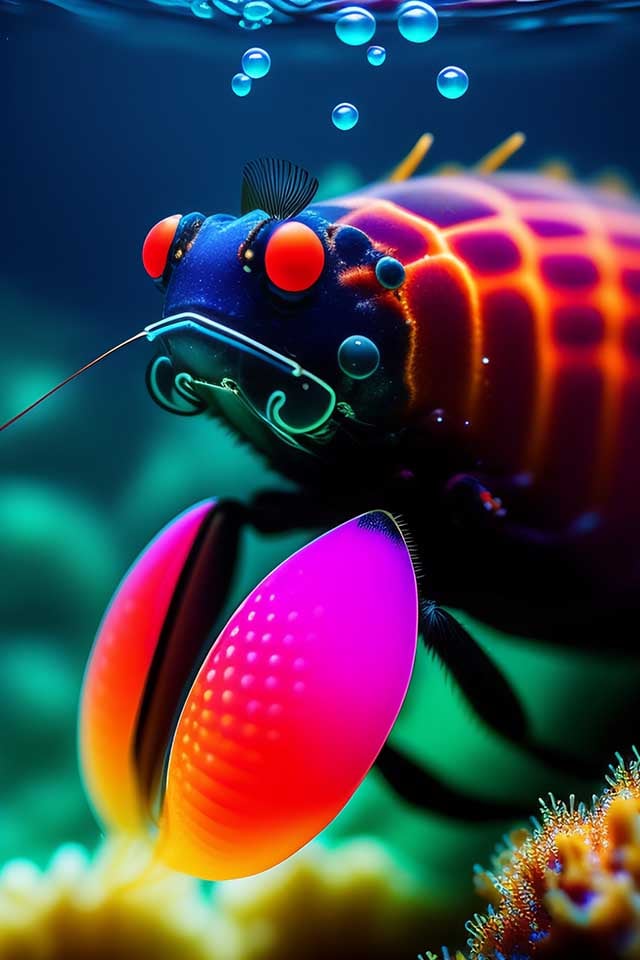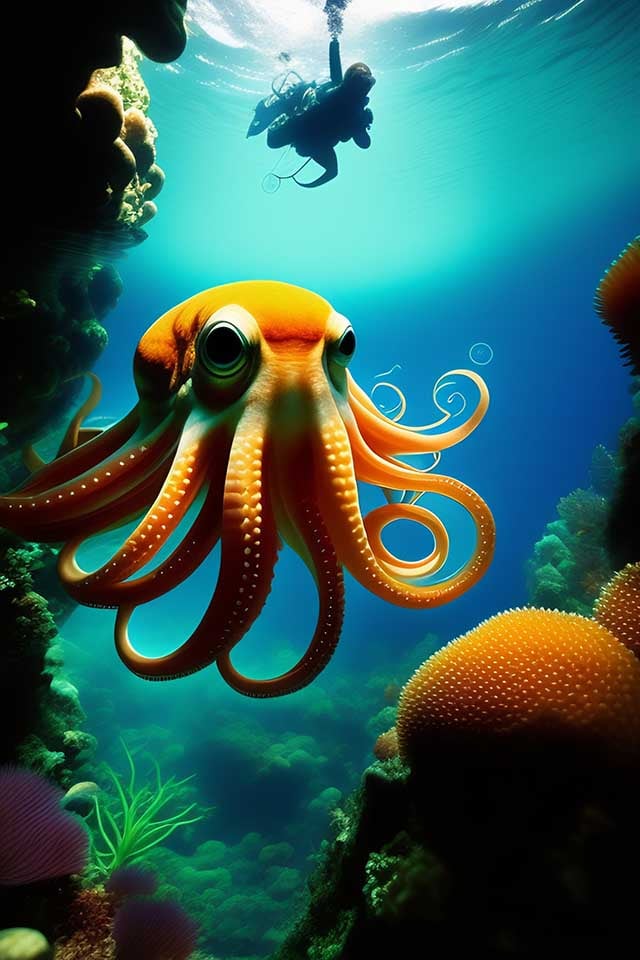Outline of ocean biodiversity
1. Introduction
2. The Importance of Ocean Biodiversity
3. The Threats to Ocean Biodiversity
4. The Solutions to Protecting Ocean Biodiversity
5. Conclusion
1. Introduction
The ocean is a vast and mysterious place, home to a wide variety of life forms. From the deep sea to the intertidal zone, there are many different types of ocean habitats. These habitats are teeming with marine life, from microscopic plankton to giant whales.
The ocean is a vital part of the Earth's ecosystem, and its biodiversity is essential for the health of our planet. Unfortunately, the ocean is under threat from human activities, and its biodiversity is declining. This is a major problem, as the ocean is a key source of food and oxygen for the planet.
It is important to protect ocean biodiversity for the sake of the environment and for future generations. There are many ways to do this, from reducing your own impact on the ocean to supporting conservation efforts. We all have a role to play in protecting the ocean and its wildlife.
So what can you do to help protect ocean biodiversity? One simple way is to reduce your impact on the ocean. For example, you can choose to eat sustainable seafood, which is caught or farmed in a way that doesn't harm the environment. You can also reduce your plastic use, as plastic pollution is a major threat to marine life. Every little bit helps!
In addition to reducing your own impact, you can also support conservation efforts. This can be done in many ways, from donating to ocean conservation charities to spreading awareness about the importance of ocean conservation.
We all have a role to play in protecting the ocean and its wildlife. By taking action to reduce our impact on the ocean and supporting conservation efforts, we can help make a difference.
2. The Importance of Ocean Biodiversity
 The oceans are home to a huge variety of plant and animal life. This biodiversity is important for many reasons.
The oceans are home to a huge variety of plant and animal life. This biodiversity is important for many reasons.
Biodiversity helps to keep ecosystems healthy. When there is a greater variety of plant and animal life, there is also a greater variety of role within the ecosystem. This helps to keep the ecosystem balanced and functioning properly.
Biodiversity is also important for the survival of humans. We rely on the oceans for food, medicine, and other resources. The more diverse the ocean ecosystem is, the more likely it is that we will be able to find the resources we need.
Lastly, biodiversity is simply beautiful. The more varied and unique the plant and animal life in the oceans is, the more interesting and enjoyable it is to explore.
The oceans play a vital role in maintaining biodiversity on our planet. By understanding the importance of this biodiversity, we can help to protect the oceans and the plant and animal life that call it home.
Biodiversity is important to the health of the planet, the food chain, and the economy. The oceans are home to a large percentage of the world's biodiversity and are a vital part of maintaining a healthy, balanced ecosystem. We rely on the oceans for food, medicine, and other resources, so it is important that we do our part to protect them.
3. The Threats to Ocean Biodiversity
 The ocean is a vital part of our planet, and it is home to an incredible amount of biodiversity. However, this biodiversity is under threat from a number of different sources.
The ocean is a vital part of our planet, and it is home to an incredible amount of biodiversity. However, this biodiversity is under threat from a number of different sources.
The three main threats to ocean biodiversity are overfishing, pollution, and climate change.
Overfishing is a huge problem because it not only harms the fish population, but also the entire marine ecosystem. When fish stocks are depleted, it can have a ripple effect through the entire food chain. This can lead to a decline in populations of other marine animals, as well as an overall reduction in the health of the ocean.
Pollution from things like plastic and chemicals is also a huge threat. It hurts not only the animals that ingest it, but also the plants and coral. This pollution can cause disease and death in marine life, and it can also damage delicate ecosystems.
Climate change is a major threat because it is causing the ocean to warm and the ice to melt. This is causing sea levels to rise and the ocean to become more acidic. This changing environment is putting stress on marine species, and many are struggling to adapt.
These threats to ocean biodiversity are serious, and we need to do something to protect the ocean and the amazing creatures that call it home. We can start by reducing our own impact on the ocean. This means eating less fish, reducing our plastic use, and working to reduce our carbon emissions. We need to do our part to protect the ocean, before it's too late.
4. The Solutions to Protecting Ocean Biodiversity
The ocean is a vital part of our planet, providing us with food, oxygen, and a home for a vast array of plant and animal life. However, the ocean is under threat from a variety of environmental problems, including pollution, overfishing, and climate change. If we want to protect ocean biodiversity, we need to take action to address these problems.
One of the most effective ways to protect the ocean is to establish marine protected areas (MPAs). MPAs are defined as geographic areas that are designated to protect or conserve marine life. They can vary greatly in size and scope, from small, local areas to vast expanses of ocean. MPAs can be established for a variety of reasons, including protecting endangered species, safeguarding important habitats, or preserving traditional fishing grounds. There are a variety of different types of MPAs, each with its own set of rules and regulations.
MPAs are effective because they help to preserve critical habitats and species, while also providing a buffer against the negative impacts of human activities. By establishing MPAs, we can help to ensure that the ocean remains a healthy and productive ecosystem for generations to come.
One example of an MPA is the Great Barrier Reef Marine Park, which was established in 1975. The Great Barrier Reef Marine Park is located off the coast of Australia and covers an area of 344,400 square kilometers. The park is home to a wide variety of plant and animal life, including over 1,500 species of fish, 400 species of coral, and 4,000 species of mollusks. The Great Barrier Reef Marine Park is a prime example of an MPA that helps to protect both endangered species and important habitats.
Sustainable fishing
 Another important solution is to implement sustainable fishing practices. Sustainable fishing is defined as a way of fishing that ensures the long-term viability of fish stocks and the marine ecosystem. Sustainable fishing practices seek to minimize the impact of fishing on the environment, while still providing a livelihood for fishermen. There are a number of different sustainable fishing practices that can be implemented, such as using more selective fishing gear, practicing catch and release, and setting quotas.
Another important solution is to implement sustainable fishing practices. Sustainable fishing is defined as a way of fishing that ensures the long-term viability of fish stocks and the marine ecosystem. Sustainable fishing practices seek to minimize the impact of fishing on the environment, while still providing a livelihood for fishermen. There are a number of different sustainable fishing practices that can be implemented, such as using more selective fishing gear, practicing catch and release, and setting quotas.
Sustainable fishing is important because it helps to protect fish stocks and the marine environment from the negative impacts of overfishing. Overfishing is a major problem because it can lead to the depletion of fish stocks, as well as the destruction of important marine habitats. By using sustainable fishing practices, we can help to ensure that the ocean remains a bountiful source of food and income for generations to come.
We also need to reduce ocean pollution. Ocean pollution is defined as the introduction of harmful substances into the marine environment. Ocean pollution can come from a variety of sources, including land-based sources such as agriculture and industry, as well as ocean-based sources such as ships and offshore drilling. Pollution can have a devastating impact on ocean ecosystems, causing harm to marine life and humans. There are a number of ways to reduce ocean pollution, such as reducing the use of harmful chemicals, proper disposal of waste, and increasing public awareness.
Ocean pollution is a serious problem because it can have a detrimental impact on the health of marine ecosystems. For example, ocean pollution can cause coral bleaching, which is a process by which coral reefs are damaged or killed by pollutants. Coral bleaching can have a devastating impact on coral reefs, as well as the plant and animal life that depends on them. By taking steps to reduce ocean pollution, we can help to ensure that the ocean remains a clean and healthy environment for all.
Finally, we need to take action to mitigate climate change. Climate change is defined as a long-term alteration in temperature or typical weather patterns in a place. Climate change is caused by a variety of factors, including human activity, natural cycles, and solar variability. Climate change can have a number of impacts on ocean ecosystems, including bleaching of coral reefs and alterations in ocean currents. There are a number of ways to mitigate climate change, such as reducing greenhouse gas emissions, planting trees, and increasing public awareness.
Climate change is a major threat to ocean biodiversity because it can cause drastic changes in the environment. For example, climate change can cause ocean acidification, which is a process by which the ocean becomes more acidic. Ocean acidification can have a number of negative impacts, including the bleaching of coral reefs and the depletion of fish stocks. By taking action to mitigate climate change, we can help to ensure that the ocean remains a stable and hospitable ecosystem for all.
If we want to protect ocean biodiversity, we need to take action on all fronts. We need to reduce human-caused pollution and waste in the ocean, by reducing our use of plastic, increasing recycling, and properly disposing of hazardous materials. We need to reduce overfishing and bycatch, by
5. Conclusion
The ocean is a vast and mysterious place, home to a staggering amount of plant and animal life. This incredible biodiversity is essential to the health of the ecosystem, and yet it is under threat from human activity.
We rely on the ocean for food, transportation, and recreation, but we are also its biggest threat. Pollution, overfishing, and habitat destruction are just some of the ways we are harming the ocean and its inhabitants.
It is vital that we do our part to protect this vital resource. Reducing our reliance on plastic, supporting sustainable fishing practices, and cleaning up coastal areas are all great ways to help preserve ocean biodiversity.
By working together, we can ensure that the ocean remains a healthy and vibrant place for generations to come. Let's do our part to protect this amazing place!